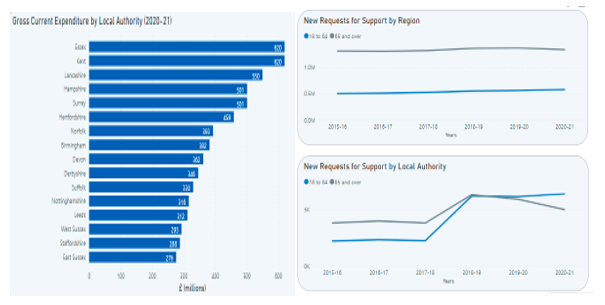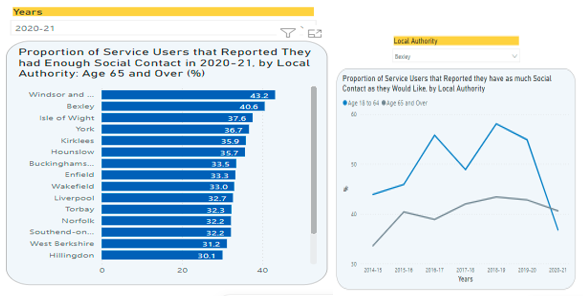Posted by:
Sunayana Thakur
Publish Date:
19 Jan, 2022
Social Vulnerability throughout the pandemic has taken a different direction to the traditional concept of social vulnerability. Unprecedented volumes at care centres have triggered a steep rise in costs incurred by Local Authorities and regions.
However, the underlying data on social care in 2020-2021 raises concerns, flagging the need for digital efficiencies and the adoption of a holistic and managed approach to social care. The data by NHS digital summarises the overall growth in demand for social care. For example, the gross expenditure in Adult Social Care increased by £2 billion in 2020-21, with the Council of Essex reporting a whopping £620 million spent. A similar situation was seen at Kent Council. These rising costs are driven by caring for the homeless, supporting adults with complex needs like those with addictions, trauma, criminal psychosis, physical disabilities, and mental disorders - the list is complex and endless.
While expenses are growing, citizen engagement is still low. Data shows that the number of new requests for citizens needing long-term care has been steady and does not show a significant rise during Covid times. Yet, this is contrary to the data collected in the study, which shows only 40% of social care users reported receiving as much social care contact as they would like.
Improved citizen engagement could help bridge the gap between social care support demand and delivery, but we need to ask ourselves what is preventing citizens from reaching out to support groups and local authorities? This goes both for citizens reaching out to authorities and authorities reaching out to citizens.


Source: NHS Adult Social Care Analytical Hub
Drilling into this data also shines a light on how service users do not always feel that the care from the local authorities improves their self-esteem or makes them feel better. Feedback on the service and quality of life in care suggests these areas require continuous improvement.
The common plight experienced by vulnerable people during the COVID‐19 pandemic also calls for an examination of the same, focusing on gender, class, and other axes of inequality, including race and ethnicity.
These key insights can guide our council programs:
- A council should be ‘able’ and ‘transparent’ across segments so that citizens can reach out without inhibition.
- Social care channels should provide quality assurance and proper care to the right segment of those in need.
- Proactive steering with tools like socioeconomic monitoring can help the state with readiness and social care for all.
The disturbing visuals of people suffering and navigating life and the emerging complexities through the pandemic and the resultant lockdowns are still rife. And the insecurity and anxieties have crept into the social psyche where they are bound to remain for a long time to come. But, with the help of data, the right technology, and social care professionals, the government can negotiate these trying times with relative ease.